Non-Movement Area
Driver/Pedestrians
Training Manual
Bishop Airport
703 Airport Road, Bishop CA, 93514
Airport Operations: (760) 872-2971
December 2021
2
Table of Contents
Table of Contents ................................................................................................................ 2
1. DEFINITIONS.............................................................................................................. 3
2. INTRODUCTION ........................................................................................................ 5
2.1. Training Process ........................................................................................................ 5
2.1.1. Certified Trainer Requirements (Pertains to airport businesses only).................... 5
2.1.2. Badging Application ............................................................................................... 6
2.2. Prerequisites .............................................................................................................. 6
2.3. Credential Issuance, Expiration, and Renewal .......................................................... 6
3. SECURITY ................................................................................................................... 6
3.1. Disclaimer ................................................................................................................. 6
3.2. Authorized Access ..................................................................................................... 7
3.3. Security Responsibilities under CFR Section 1540.105 ........................................... 7
3.4. Perimeter Security and Gate Access Control ............................................................ 7
4. AIRFIELD FAMILIARIZATION ................................................................................ 8
4.1. Non-Movement Areas ............................................................................................... 8
4.2. Movement Areas ....................................................................................................... 8
4.3. Airfield Markings ...................................................................................................... 8
4.3.1. Non-Movement Area Boundary Marking .............................................................. 8
4.3.2. Taxiway Centerline Markings ................................................................................ 9
4.3.3. Taxiway Edge Markings ........................................................................................ 9
4.3.4. Security Identification Display Area Markings ...................................................... 9
5. GENERAL OPERATING GUIDELINES ................................................................. 10
5.1. Operating Vehicles on Ramps ................................................................................. 10
5.2. Aircraft Right of Way .............................................................................................. 10
5.3. Safe Operations Near Aircraft ................................................................................. 10
5.4. Speed Limits ............................................................................................................ 10
5.5. Electronic Device Use ............................................................................................. 11
5.6. Emergency Response Vehicles................................................................................ 11
5.7. Foreign Object Debris (FOD) .................................................................................. 11
5.8. Escorts ..................................................................................................................... 12
5.9. Challenge Procedures .............................................................................................. 13
5.10. Special Considerations .......................................................................................... 13
5.10.1. Nighttime & Low Visibility Conditions ............................................................. 13
5.10.2. Wildlife ............................................................................................................... 14
5.10.3. Construction ....................................................................................................... 14
6. INCIDENTS, ACCIDENTS AND SPILLS ............................................................... 14
6.1. Incident/Accident Reporting ................................................................................... 15
6.2. Special Consideration for Accidents Involving Parked Aircraft ............................. 15
6.3. Medical Emergencies .............................................................................................. 15
6.4. Vehicle/Pedestrian Deviation (V/PD) ..................................................................... 15
6.5. Spills ........................................................................................................................ 16
6.6. Vehicle and Driver Regulations on the Airside ....................................................... 17
6.6.1. Drivers .................................................................................................................. 17
6.6.2. Vehicles ................................................................................................................ 18
6.7. Violation of Rules - Penalties and Suspension of Driving Privileges ..................... 18
3
1. DEFINITIONS
Accident – a collision between one aircraft or vehicle and another aircraft, vehicle, person, or
object that results in property damage, personal injury, or death.
Access Road - a vehicular road located airside for use by BIH, FAA and airport tenants and
contractors.
Air Operations Area (AOA) - includes all areas inside BIH’s perimeter fence. The AOA is
restricted access and consists of both the Movement and Non-Movement Areas.
Airport Manager - the person appointed by the Inyo County Board of Supervisors to have
immediate supervision of the administration and operation of the Airport. The Airport
Manager may employ and designate staff to act in his behalf in the promulgation of Inyo
County and/or Bishop Airport policy. Whenever in these rules and regulations where Airport
Manager is designated, it shall mean Airport Manager or his staff.
Airside–those areas of an airport that support aircraft activities. At Bishop Airport the airside
is all the land within the perimeter fence and includes both the Air Operations Area and the
Secured Area.
Apron or Ramp–a defined area on an airport intended to accommodate aircraft for the
purposes of parking, loading and unloading passengers or cargo, refueling, or maintenance.
Attended- when used in reference to any vehicle, means the operator is non-impaired, has an
unobstructed view from the vehicle or is within 25 feet of the vehicle.
Authorized Signatory – Any individual or designated representative authorized to sponsor
individuals, collect and transmit biographical data, and request airport identification (ID) media for
them.
CFR - Code of Federal Regulations
Challenge - The act of attempting to ascertain the authority or purpose of an unescorted person,
not wearing or displaying Airport approved identification, to access or remain in the Air
Operations Area or Security Identification Display Area (SIDA) of the Airport, by directly
requesting such person to display Airport-approved identification.
Emergency Medical Services (EMS) – Advanced life support and transport services provided
by Symons Ambulance Service. Initiated by calling 9-1-1.
Escort - to accompany or monitor the activities of an individual who does NOT have
unescorted access authority to the Secured Area, SIDA or AOA.
Foreign Object Debris (FOD) – debris that can cause damage to aircraft engines, tires, or
fuselage from rocks, trash, or the actual debris found on runways, taxiways, and aprons.
Ground Support Equipment (GSE)–all conveyances (i.e., tugs, belt loaders, bag carts, de-
icer trucks, fuel trucks, etc.) normally used in support of aircraft operations.
Movement Area (MA)–the runways, taxiways, and other areas of an airport that aircraft use
for taxiing, takeoff, and landing, exclusive of loading ramps and parking areas.
Non-movement Area (NMA)– areas of an airport that are outside the Movement Area, but are
still available to aircraft, such as the hangar area, transient GA ramp, main ramp (SIDA Area)
and fuel farm area.
Operator–any person who is in actual physical control of an aircraft or a motor vehicle.

4
Pedestrian- any person afoot.
Permission or Permit - permission granted by the Airport Manager, unless otherwise
indicated. Permission or permit, whenever required by the rules and regulations shall be
written permission, except that verbal permission in specific instances may be granted under
special circumstances where the obtaining of written permission would not be practical.
Protected Area - the protected area of a surface intended for landing or takeoff includes the
area inside the runway hold position markings (e.g., hold line) on paved taxiways and the
designated runway safety area.
Right of Way- the right of one aircraft, vehicle or pedestrian to proceed in a lawful manner in
preference to another aircraft, vehicle or pedestrian approaching under such circumstances of
direction, speed, and proximity as to give rise to danger of collision unless one grants
precedence to the other.
Runway–a defined rectangular area on a land airport prepared for the landing and takeoff run
of aircraft along its length.
Runway Incursion–Any occurrence at an aerodrome involving the incorrect presence of an
aircraft, vehicle or person on the protected area of a surface designated for the landing and
take-off of aircraft
Runway Safety Area-a defined surface surrounding the runway prepared or suitable for
reducing the risk of damage to airplanes in the event of an undershoot, overshoot, or excursion
from the runway.
Security Identification Display Area (SIDA) – Also referred to as the “Secured Area”. The
portion of the Bishop Airport within the perimeter fence where commercial aircraft operators
enplane and deplane passengers; and sort and load baggage. This is the area around the
terminal building denoted by red striping.
Sterile Area – The passenger holding/gate area in the Sprung Structure, beyond the TSA
Checkpoint.
Surface Incident - Unauthorized or unapproved movement within the designated movement
area (excluding runway incursions) or an occurrence in that same area associated with the
operation of an aircraft that affects or could affect the safety of flight.
Taxilane - A taxiway designed for low speed and precise taxiing. There are few taxilanes at
BIH – they are located outside the movement area, providing access from taxiways to aircraft
parking positions and other terminal and hangar areas (for example the short taxilane leading
to the Reach hangar).
Taxiways – those parts of the movement area designated for the surface maneuvering of
aircraft to and from the runways and aircraft parking areas.
Transient General Aviation Ramp - area on the northwest side of the airport terminal
intended to accommodate aircraft for the purposes of parking, loading and unloading
passengers or cargo, or refueling.
TSA – Transportation Security Administration
Vehicle or Pedestrian Deviation (V/PD) - any entry or movement on the airport movement
area or safety area by a vehicle operator or pedestrian that has not been authorized (includes
surface incidents involving aircraft operated by non-pilots, such as an aircraft being towed).
5
2. INTRODUCTION
The Bishop Airport Driver Training Program has been developed by Inyo County to ensure that all
drivers are aware of the unique risks of operating a vehicle in the airport environment. This manual
applies to all persons operating any type of motor vehicle on any portion of the Non-Movement
Area at Bishop Airport (BIH).
The purpose of this Driver Training Manual is to familiarize drivers with Inyo County (BIH) rules
and procedures for safely operating a vehicle on the Non-Movement Area at BIH. Driving on the
Non-Movement Area at BIH is a privilege, not a right. It is the responsibility of all employees,
lessees, contractors and vendors who are issued driving privileges to understand and follow the
procedures discussed in this manual. This is not an all-inclusive training aid and is used in
conjunction with other FAA and employer specific training materials to successfully complete non-
movement area driver’s training.
The information presented in this training manual has been developed to inform and educate vehicle
drivers about the various signs, lighting, markings and communication procedures specifically
utilized in the airport environment. It will include maps, pictures, basic driving guidelines and the
Bishop Airport Rules and Regulations pertaining to driving on the airside. It is your responsibility
to know, understand and follow the guidelines and requirements outlined in this manual when driving
on the non-movement area.
2.1. Training Process
To obtain non-movement area (NMA) driving privileges and escort (signified by a “D” and “E” on
the BIH ID badges), every company with NMA qualified drivers may identify a “Certified
Trainer/Authorized Signatory” (CT/AS) to provide training specific to their company’s operations
within the AOA and to act as an Authorized Signatory for BIH ID badge applicants. Private airport
users and employees whose companies do not identify a CT/AS will be trained by Airport
Operations staff.
2.1.1. Certified Trainer Requirements (Pertains to airport businesses only)
In addition to completing the BIH NMA driving curriculum, all CT/AS’s must attend an airside
tour designed to foster a clear understanding of the curriculum and operating environment and
discuss the role and duties of an Authorized Signatory. Airport Operations Staff and the CT/AS will
discuss the company’s operations and any specific topics that must be covered in their employee’s
additional training curriculum. After the CT/AS completes the required training program, he or she
becomes the trainer for their company’s employees related to driving on the NMA and certifies that
each applicant has been provided an appropriate level of instruction. Companies may utilize multiple
CT/AS’s. In order for an individual to maintain his or her CT/AS qualifications, he or she must
attend the BIH provided course upon badge renewal every two years, and notify the Airport
Manager if any changes are needed to the company’s additional driver training curriculum.
CT/AS’s must maintain training records (including personnel names, dates, and a copy of the
curriculum) for 24 consecutive calendar months. BIH may audit the CT/AS’s training records at
any time. Additionally, the CT/AS must submit an Authorized Signatory application and undergo a
Security Threat Assessment through TSA. This is only required for the initial designation as a
CT/AS, not at recurrent trainings.
6
2.1.2. Badging Application
Badging applicants seeking NMA driving privileges (other than CTs) will be required to complete
the following:
• Review this training manual
• Request clarification or additional information from the CT or Airport Operations on any topics that
are not fully understood
• Complete the company provided training by the CT specific to their operation on the airport
if applicable.
The applicant can then submit the AOA Badge Application, along with the CT’s certification (if
applicable) and take the BIH quiz. Applicants applying for SIDA access must complete additional
security related trainings; please discuss with Airport Manager.
New badge applicants who do not pass the quiz will not be badged and will be required to re-test
after at least 24 hours has passed. Should an individual fail the driver’s test a second time, they
must present a letter from their manager stating what remedial steps have been taken to ensure the
individual can safely operate a vehicle on the airside. If the remedial steps are sufficient, the
individual may re-test a third time. After three consecutive failures, NMA driving privileges will
not be granted.
2.2. Prerequisites
The individual must present a valid state issued driver’s license to operate the class of vehicle by an
appropriate state licensing agency or documentation from their company that they have successfully
completed a company sponsored driver training program.
2.3. Credential Issuance, Expiration, and Renewal
Once an applicant has successfully completed all stages of the BIH NMA Drivers Training
Program, the NMA driver’s credential (signified by a “D” on a BIH badge) will be issued by Airport
Operations.
Recurrent training is required every two years. In the event a driver fails to complete their recurrent
drivers training, their driving privileges will be revoked by the BIH until all required training has
been completed.
Driver training and testing is also required when renewing badges, as applicable. An individual
who fails to pass the driving test on renewal is not permitted to operate a vehicle on the airside until
the test is successfully completed as outlined above.
Expired, suspended or revoked licenses or badges are not a valid form of identification. BIH badges
are to be worn at all times by employees within the AOA and must be displayed above the waist
and outside of the wearer’s outermost garment. Hangar tenants may keep their BIH badge in their
vehicle while in the AOA.
3. SECURITY
3.1. Disclaimer
The purpose of this training manual is to promote safe vehicle and equipment operations on the
airside of the airport. The following sections emphasize some security requirements related to
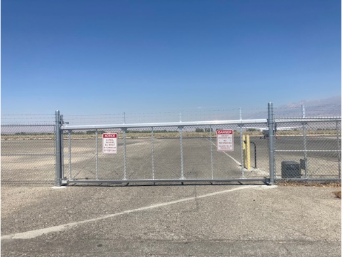
7
vehicle and equipment operations but are not all encompassing. Applicable security regulations and
training provided by the BIH should be referenced for more detailed information.
3.2. Authorized Access
Only those vehicles that are necessary for the continued operation of the airport or for the support
of airport related activities may be located and operated inside the airport’s perimeter fence. All
other vehicles shall remain outside of the fence. Personal vehicles are never permitted to operate
inside the perimeter fence with the exception of those vehicles with the appropriate hang tags that
have been approved to access T-Hangars on the south side of the terminal area, or vehicles that
have received special permission from the Airport Operations office.
3.3. Security Responsibilities under CFR Section 1540.105
No person may:
A. Tamper or interfere with, compromise, modify, attempt to circumvent, or cause a person to tamper or
interfere with, compromise, modify, or attempt to circumvent any security system, measure, or
procedure described in this manual.
B. Enter, or be present within, a secured area, AOA, SIDA or sterile area without complying with the
systems, measures, or procedures being applied to control access to, or presence or movement in,
such areas.
C. Use, allow to be used, or cause to be used, any airport-issued or airport-approved access medium or
identification medium that authorizes the access, presence, or movement of persons or vehicles in
secured areas, AOA's, or SIDA's in any other manner than that for which it was issued by the Bishop
Airport.
3.4. Perimeter Security and Gate Access Control
The terminal area is surrounded by chain-link fencing or buildings with controlled access points; the
remainder of the airfield is surrounded by a barbed wire fence. Three vehicle gates are located at
various locations along the fence line to provide access to the airside. All vehicle gates have locking
mechanisms that require a badge to gain access. These gates must always be secured when not in
use.
Airport users with access to the non-movement area must use the security gate closest to their
destination, ie. T-hangar lessees use Gate 2, cargo trucks use Gate 1 (see Attachment A: Bishop
Airport Movement Area Map for gate locations).
It is your responsibility as a vehicle operator or pedestrian to secure a gate or door after passing
through it. You must ensure that nobody follows you through a gate or doorway. You must position
your vehicle so that it blocks the gate until the gate has fully secured.
Image 2. Terminal Area Security Gate (Gate No.1)
8
If you happen to find an unsecured gate, hole in the fence, open door or other un- attended/unsecured
point of access to the airside, it is your responsibility to report it. Notification must be provided to
Airport Operations at 760-937-4017 (24 hours per day).
For those without SIDA access, the only available access to the terminal building is through the front
door.
4. AIRFIELD FAMILIARIZATION
4.1. Non-Movement Areas
The Non-Movement Area (NMA) includes the terminal, cargo, hangar, General Aviation ramps and
the taxilane to the Reach hangar. Vehicles, equipment, and aircraft can operate in the NMA. It is
imperative that you exercise extreme caution when driving in these areas. Aircraft movements occur
around the clock and since both the pilots’ field of vision from the cockpit and an aircraft’s
maneuvering capability are limited; it is up to the ground vehicle operator to exercise safety and
proper driving habits to avoid collisions and accidents. Aircraft always have the right-of-way over
vehicles. The Attachment A: Bishop Airport Movement Area Map for an illustration of the NMA in
relation to the Movement Area (MA).
4.2. Movement Areas
The Movement Area (MA) includes the runways, taxiways, and other areas of an airport that are used
for taxiing or hover taxiing, air taxiing, takeoff, and landing of aircraft including helicopters and tilt-
rotors, exclusive of loading aprons and aircraft parking areas. The Non-Movement Area Boundary
Marking and Taxiway Edge Marking (around the main apron) identify the border between the NMA
and the MA (Image 3 and 5). Only drivers with Movement Area privileges may cross into the
movement area. All other vehicles/GSE shall be escorted by a BIH vehicle.
Ground vehicles or equipment found to be operating in the MA that are not authorized pose a serious
risk to air traffic. This constitutes a V/PD and/or surface incident. The operators of such vehicles or
equipment are subject to substantial penalty up to and including revocation of all airside driving
privileges.
4.3. Airfield Markings
4.3.1. Non-Movement Area Boundary Marking
The non-movement area boundary marking is used to delineate the movement areas from the non-
movement areas. This marking consists of a single solid yellow line located on the non-movement
area side and a single dashed yellow line located on the movement area side. A vehicle operator is not
to cross from the solid-line side into the movement area. At BIH, the only location with this marking
is inside Gate 1, marking the boundary between the service road and Taxiway B. Only authorized and
properly trained employees of BIH and FAA may operate ground vehicles on the movement area with
appropriate radio calls.

9
Image 3. Movement Area Boundary
4.3.2. Taxiway Centerline Markings
The taxiway centerline provides pilots with continuous visual guidance to permit taxiing along a
designated path. It is a continuous yellow marking that provides pilots with the location of the center of a
taxiway. It also ensures pilots of wing tip clearance on both sides of the aircraft.
Image 4. Taxiway centerline
4.3.3. Taxiway Edge Markings
The only taxiway edge markings at BIH are located between Taxiway A and B and the main apron.
Aircraft may cross this line, but must be aware that they are transitioning from ramp to taxiway. This
marking also indicates entry into the Movement Area, therefore those with Non-Movement Area driving
privileges may not cross.
Image 5. Taxiway Edge Marking
4.3.4. Security Identification Display Area Markings
A NMA badge does not give drivers or pedestrians authority to cross into the Security Identification Display Area
(SIDA). Besides emergency services vehicles, only Airport, airline, TSA employees who have under appropriate
screening and training may enter this area. At BIH, the SIDA is demarcated by a 24 inch red boundary marking
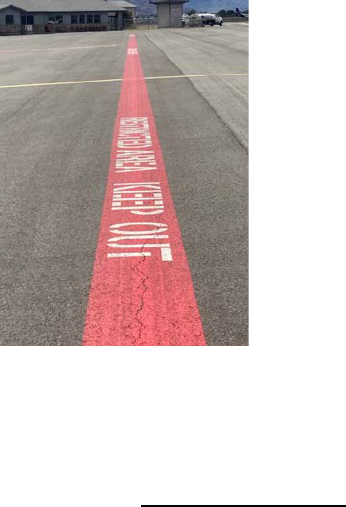
10
reading “Restricted Area Keep Out”.
Image 6. SIDA Marking
5. GENERAL OPERATING GUIDELINES
5.1. Operating Vehicles on Ramps
Ramp areas (also known as aprons) are within the Non-Movement Area. This provides a vehicle
operator the flexibility of movement needed to perform many of the tasks that occur on a ramp, but
still requires the vehicle operator to be alert at all times.
Many activities take place on a ramp that can create a distraction or hazard: aircraft are often moving
and noise levels can be high enough to mask sounds that would normally provide a warning. For these
reasons, certain aspects of operating on the airport’s ramps are emphasized in the following sections.
5.2. Aircraft Right of Way
Vehicle and equipment operators must yield the right of way to all moving aircraft. This is regardless
of whether its movement is imminent, under tow or taxiing under its own power. Additionally, drivers
should assume the pilot cannot see them and it is up the vehicle operator to give aircraft plenty of
clearance to pass.
5.3. Safe Operations Near Aircraft
In addition to giving aircraft the right of way, there are several other areas to avoid and be aware of
when operating a vehicle on the non-movement area.
1. Avoid jet and propeller blast when passing behind an aircraft.
2. Be aware of jet engine ingestion areas; do not drive or walk, in within 20 feet of the front of an
active aircraft.
3. An airport environment is notoriously loud; always double check before proceeding because
you may not hear approaching aircraft, vehicles or people.
4. Yield to emergency vehicles, snow removal equipment and pedestrians.
5. Wear a safety vest or a high visibility jacket when working on the ramp.
5.4. Speed Limits
- Ramps: 10 MPH
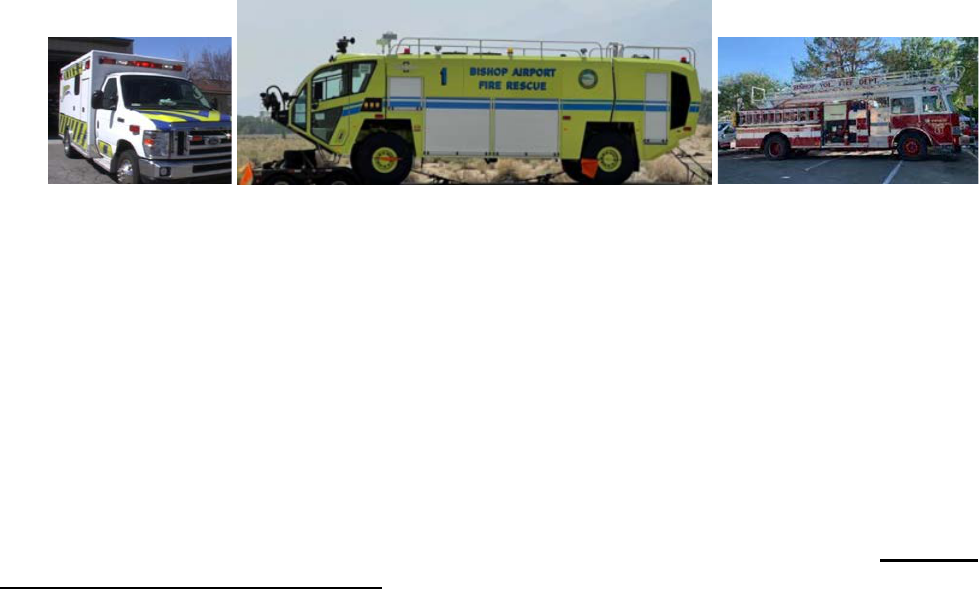
11
- Airport Taxilanes and Service Roads: 15 MPH
- Within 50 feet of aircraft: 5 MPH
The presence of emergency vehicles, aircraft, snow removal equipment, inclement weather, poor
visibility and icy conditions all necessitate a slower speed when present.
5.5. Electronic Device Use
Use of electronic devices is strongly discouraged for obvious reasons. Phone discussions, text
messaging, and other actions involving such devices can cause an unnecessary distraction which may
contribute to an accident or incident. Any person with airside access must be aware of, and comply
with, their organization’s policy on the use of electronic devices. If you must use an electronic device
while operating on the airside, first stop the vehicle in an area clear of other moving vehicles or
aircraft. Never read or send text messages while operating a moving vehicle. Finally, limit electronic
device use to work-related purposes only.
5.6. Emergency Response Vehicles
All drivers on the airport must yield to marked emergency vehicles responding to an emergency
situation as you would while driving on public streets. Emergency vehicle operators must exercise
extreme caution for unexpected movements of other vehicles, pedestrians and aircraft. It should be
noted that even in an emergency situation, taxiing aircraft may not give way to emergency vehicles.
When responding to an emergency, emergency vehicles may proceed through a stop signal or stop
sign only after ensuring they will not endanger personnel, aircraft or property. Also, they may exceed
speed limits and disregard regulations governing direction of movement or turning in specified
directions.
Image 7.
Image 8.
Image 9.
5.7. Foreign Object Debris (FOD)
Foreign Object Debris or FOD for short is defined as, “debris that can cause damage to aircraft
engines, tires, or fuselage from rocks, trash, or the actual debris found on runways, taxiways, and
aprons.” In other words, any object whether it is a nail, rock or even a plastic bottle that is on the ramp
or airfield is FOD. These objects are dangerous to aircraft not only because they can cause vast
amounts of monetary damage, but because in the right environment (runways, runway safety areas)
they can cause accidents and loss of life situations.
FOD reduction is the responsibility of everyone. If you see something, pick it up and dispose of it
before it becomes a hazard to aircraft. Anything found on the non-movement area can easily make its
way onto the movement area. If you see something while on the airside, pick it immediately and
dispose of it in a proper trash receptacle. If you see something blow into the movement area, DO NOT
GO INTO THE MOVEMENT AREA to retrieve the item. Contact Airport Operations at 760-872-
2971 and an Operations Technician will go into the movement area and pick it up.
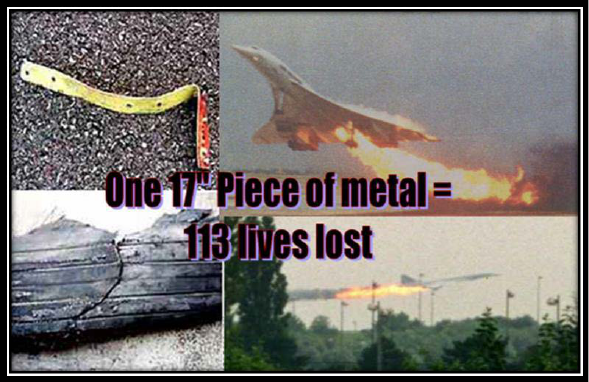
12
You can also reduce the possibility of FOD by keeping your vehicle clear of debris both inside and out.
If you drive a pickup truck, ensure that all materials contained in the bed are secured and cannot blow
out. If you are working with tools, check and re-check the area to make sure you did not accidentally
leave any on the ground where it can cause damage.
Image 10.
5.8. Escorts
An escort is required if:
A. Someone without Movement Area driving privileges requires access to a portion of the Movement
Area
B. Someone without an AOA Badge requires access to any area of the AOA
Movement Area escorts may only be performed by BIH staff; please notify Airport Operations at 760-
872-2971 if you require an escort into the MA or the SIDA Area.
If you have an employee, vendor, or delivery driver requiring an escort in the NMA (excluding the
SIDA), the following procedures shall be followed:
• The person performing the escort must have authorized unescorted access to the area
of the escort, and possess and display their ID badge with the authorized driver
(“D”) designation.
• Only escort employees/vendors/deliveries for your employer.
• Begin the escort at the terminal area security gate that is closest to the destination.
• The person performing the escort must monitor and maintain close visual contact
with the escorted vehicle at all times.
• The escorted vehicle must only be allowed to enter the areas required to complete the
task.
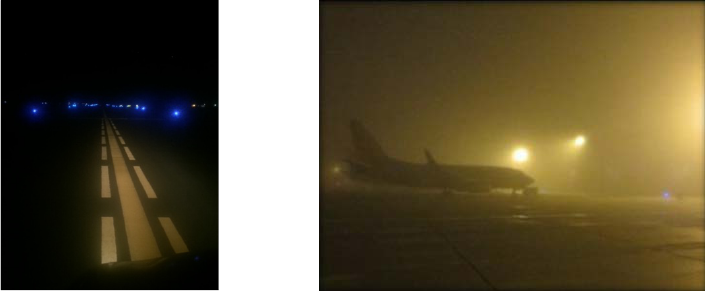
13
• The vehicle must be escorted back out using the same escort procedures.
• Escort only as many visitors as may be properly controlled.
• Visitors found in the AOA without proper escort will be asked to leave.
5.9. Challenge Procedures
To challenge an individual in the AOA is to ask an individual to produce an Airport ID Badge
to determine if they have authorization to be present in the AOA. Anyone issued an AOA
Badge should be familiar with this procedure.
If you encounter an individual exhibiting suspicious behavior, or an individual who cannot
produce an Airport ID Badge upon request, immediately report the situation to Airport staff by
calling 760-872-2971 or 760-937-4017.
An AOA Badge holder attempting to enter the SIDA Area will be challenged by Airport,
Airline or TSA staff. Repeated entry attempts into the SIDA Area may result in the suspension
of the individual’s AOA Badge and vehicle access card.
5.10. Special Considerations
5.10.1. Nighttime & Low Visibility Conditions
When driving at night or during inclement weather such as snow, rain, icy conditions and fog, allow
extra travel time and drive slower than normal. Exercise extreme caution during these conditions and
keep driving to a minimum. Only operate equipment if it is necessary for aircraft operations.
Image 11. Nighttime Image 12. Low visibility
Under winter conditions, lights, signs and markings may be obscured by snow. Braking action will be
greatly diminished and all surfaces will be slippery due to the presence of ice, snow, slush and even
de-icing fluids. Snow removal equipment may be operating in low visibility conditions and may not
see your vehicle. Use extreme caution and remember that there are extra risks present.
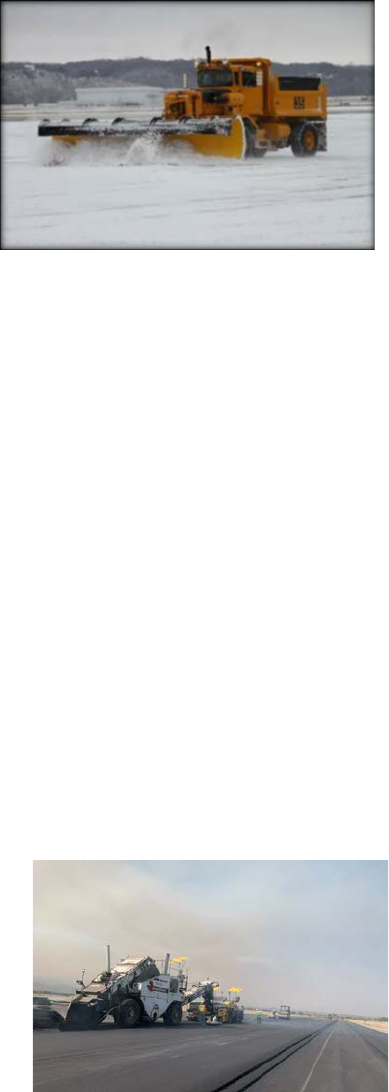
14
Image 13. Snow Removal Operations
5.10.2. Wildlife
Wildlife poses a significant threat to aviation. The airport consists of approximately 650 acres and has
water bodies on three sides. The presence of water, vegetation, agricultural land and structures in the
vicinity of the airport serve as attractants for wildlife.
Wildlife strikes cause millions of dollars in damage each year to aircraft in the United States. Such
incidents can cause severe injury to airport users, even death. If you see animals on the airside,
immediately contact Airport Operations at 760-872-2971 so that these hazards can be addressed to
ensure the safety of aircraft operations at BIH.
NMA drivers are strongly discouraged from bringing personal animals inside the AOA fence.
Animals that are brought in to the AOA in personal vehicles must remain in vehicles at all times,
except when being transferred to an aircraft on leash or in a crate.
5.10.3. Construction
Extra vigilance is essential when driving on an airport during construction. Normal driving routes may
be altered, large equipment may limit visibility, hazards such as open excavation may be present, and
operational changes may be required. For all of these reasons, heightened awareness by pilots and
drivers alike is required. Additionally, any unsafe practices observed relating to maintenance or
construction on the ramp should be reported to Airport Operations at 760-872-2971.
Image 14. Paving operations on Runway 12-30
6. INCIDENTS, ACCIDENTS AND SPILLS
Driving anywhere on the airfield is a privilege that must be taken seriously. Safely operating a vehicle
on any of the airport surfaces requires concentration and vigilance. Moving aircraft, high noise levels,
bad weather conditions and crowded ramp areas are just a few of the factors that you may encounter
when operating a vehicle at BIH. Extreme caution must be exercised at all times.
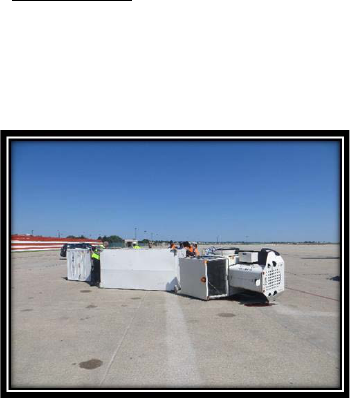
15
6.1. Incident/Accident Reporting
If you see or are involved in an incident/accident, immediately stop and remain at the scene, render
reasonable assistance to anyone injured, and report all accidents involving aircraft, motor vehicles, as
well as damage to airport property, immediately to Airport Operations at 760-872-2971. In the case
of injuries requiring emergent medical attention, call 9-1-1 to initiate an EMS response.
Airport property can include: airfield lighting, signs, navigational aids, buildings, fencing, etc. Failure
to report such incidents shall result in appropriate action taken by the Airport.
Image 15.
6.2. Special Consideration for Accidents Involving Parked Aircraft
If you are involved in, or observe, an accident involving a parked aircraft, it is critical that the aircraft not
be flown until any damage to the aircraft is assessed and repaired as needed. Remember that by not
reporting, you could be putting pilot and passenger lives in jeopardy.
6.3. Medical Emergencies
In the event of a medical emergency dial 9-1-1 to initiate an EMS response. You may also call Airport
Operations at 760-872-2971 to request basic medical services from Airport Ops/ARFF staff. An
Automated External Defibrillator is located in the terminal building.
6.4. Vehicle/Pedestrian Deviation (V/PD)
A V/PD is defined as any entry or movement on the movement area by a vehicle (including aircraft
operated by non-pilots) or pedestrian that has not been authorized. If you commit or observe a potential
V/PD you must immediately report this to Airport Operations at 760-872-2971.
There are numerous ways a V/PD can occur. Often it boils down to a lack of situational awareness
which usually combines several of the following potential contributing factors:
• Not following standardized procedures
• Lack of training or internal procedures
• Not understanding the implications of one’s actions
• Failure to ask for help when confused
• Failure to utilize the airport diagram
• Unfamiliarity with the airport

16
• Confusing airport layout or geometry
• Complacency
• Inclement weather and night operations
• Fatigue
The following guidelines can help prevent a surface incident:
• Any distractions (i.e. cell phones, reading materials, radios, passengers talking, etc.) must be
eliminated or kept to a minimum
• The driver must know the limits of his or her operating environment
• Operators must always be aware of their surroundings, especially in relation to aircraft
operations
In the event a driver enters the movement area by mistake he or she must:
• Stop the vehicle/equipment and regain composure
• Survey the surroundings for aircraft and proximity to a runway
• Cautiously exit the movement area via the quickest route possible
• Never proceed beyond markings, signs, and lighting that mark the boundary of the runway.
These are shown below:
Image 15. Runway Hold Position Sign
Image 17. Runway Hold Position Marking
6.5. Spills
It is the responsibility of all airport employees and users to engage in safe driving and fueling practices
in order to avoid spills of any hazardous material including petroleum products, de-icing fluid or
lavatory waste. If a spill occurs, or if you notice a spill, contact Airport Operations at 760-872-2971.
No spill is too small to report. If you are in doubt, the best response is to call.
A fuel spill kit and a can of absorbent material are located at the BIH fuel farm. It is never permissible
to push the spill into a drain or simply dilute it with water. Timely reporting is critical to prevent
further contamination and to secure the scene safely. Airport Operations must be notified as soon as
you are physically able to do so.
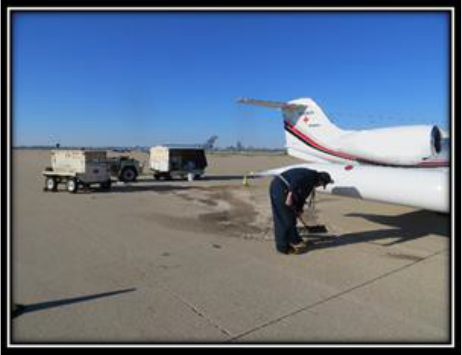
17
Image 18.
6.6. Vehicle and Driver Regulations on the Airside
6.6.1. Drivers
1. No vehicle/GSE shall be operated on the airside non-movement areas unless:
a. The driver has submitted an application for non-movement area driving privileges to the
Bishop Airport management, completed the required training items listed on the
application, and been approved for non-movement area driving.
b. The driver possesses an Airport issued ID badge with the "Authorized Driver" (“D”
designation or the vehicle/GSE is under escort according to escort procedures listed in
Section 5.8).
2. No person operating or driving a vehicle/GSE on the ramp shall drive at a speed greater than
ten (10) miles per hour or at such a rate of speed as to endanger any aircraft, vehicle/GSE or
personnel.
3. At BIH, no vehicle/GSE shall pass between an aircraft and the passenger terminal when the
aircraft is parked at a gate position, except those vehicles/GSE servicing the aircraft. All
other vehicles/GSE must drive to the rear of the aircraft and shall pass no closer than twenty
(20) feet from any wing or tail section.
4. Passengers enplaning or deplaning aircraft, and moving aircraft, shall have the right-of-way
at all times over vehicular/GSE traffic. Vehicle/GSE drivers must yield the right-of-way.
5. No person shall operate any motor vehicle/GSE which is in such physical or mechanical
condition as to endanger persons or property.
6. No person shall:
a. Operate any vehicle/GSE that is overloaded or carrying more passengers or baggage
than the number for which the vehicle was designed.
b. Ride on the running board or stand up in the body of a moving vehicle/GSE.
c. Ride with arms or legs protruding from the body of a vehicle/GSE.
7. A guide-man is required whenever the vehicle/GSE operator's vision is restricted.
18
8. Vehicles/GSE and other equipment shall be parked only within a tenant's own leased space;
or in other approved areas as directed by Airport Operations personnel.
9. No person shall park a vehicle/GSE in an aircraft parking area, safety area, grass area, or in a
manner so as to obstruct or interfere with any aircraft movement area or ramp area. No
person shall park, or leave unattended, vehicles/GSE or other equipment that interferes with
use of any facility by others, or prevents movement or passage of aircraft, emergency vehicles
or other motor vehicles/GSE or equipment.
10. No person shall park a vehicle/GSE or equipment within fifteen feet of a fire hydrant or in
such a manner as to prohibit access the fire hydrant by personnel or equipment.
11. No person shall operate a vehicle/GSE or other equipment on the airside non-movement
areas while under the influence of alcohol or any drug which impairs, or may impair the
operator's abilities.
12. Each vehicle/GSE operator utilizing an airport perimeter (security) gate shall ensure the gate
closes behind their vehicle prior to leaving the vicinity of the gate, and shall ensure no
unauthorized vehicles or persons gain access to the airside while the gate is open.
13. Vehicles/GSE shall not be operated in a reckless or careless manner. A reckless or careless
manner is one that intentionally or through negligence threatens the life or safety of any
person, or threatens damage or destruction to property.
14. No vehicle/GSE shall be driven over any unprotected hose of a fire department or ARFF
truck without the consent of a fire department official.
6.6.2. Vehicles
1. No vehicle shall be operated on the airside non-movement areas unless it is registered, or is
designated as GSE not normally operated on public streets.
2. All vehicles operated on the airside non-movement areas must have vehicle liability insurance
as required by the Airport Manager.
3. At BIH, all vehicles operated on the airside non-movement areas shall be approved by the
Airport Manager. Commercial vehicles shall be marked with the tenant company's logo or
be of such configuration that its purpose as an aircraft or airport support vehicle is obvious.
4. Carts and all non-motorized equipment being towed or moved after darkness shall have
reflectors, rear lights and /or reflective tape visible from a 360 degree circle around them.
5. No vehicle shall be permitted on the airside non-movement areas unless it is in sound
mechanical condition with unobstructed forward and side vision from the driver's seat.
6. From sunset to sunrise, and during inclement weather resulting in periods of low visibility
(snow, rain, blowing dust, etc.) all motor vehicles / GSE shall utilize headlights and tail
lights.
6.7. Violation of Rules - Penalties and Suspension of Driving Privileges
Any person, who does not comply with any of the provisions of the rules and regulations laid
out in this document, or any lawful order issued pursuant thereto, will be subject to progressive
penalties for repeat violations. These penalties may include denied use of the Airport in addition
to the penalties described pursuant to Federal, state, or local authorities.
19
1. Penalties for failure to comply with the airside vehicular regulations shall consist of written
warnings, suspension of airside driving privileges and/or revocation of airside driving
privileges. Receipt of three written warnings by an operator of a vehicle in any twelve month
period will automatically result in suspension of airside driving privileges. Receipt of four
written warnings in any twelve month period will automatically result in revocation of airside
driving privileges.
2. Based on an evaluation of the circumstances or the severity of a particular incident or
incidents, the BIH reserves the exclusive right to assess any penalty it deems appropriate at
any given time to any individual authorized to operate a vehicle on the airside without regard
to prior operating history.
3. Suspension of airside driving privileges shall be no less than seven (7) calendar days; and no
greater than thirty (30) calendar days.
4. The BIH will provide a copy of all written warnings issued to an operator to the local manager
of the company owning or in possession and control of the vehicle or vehicles involved in the
violation(s).
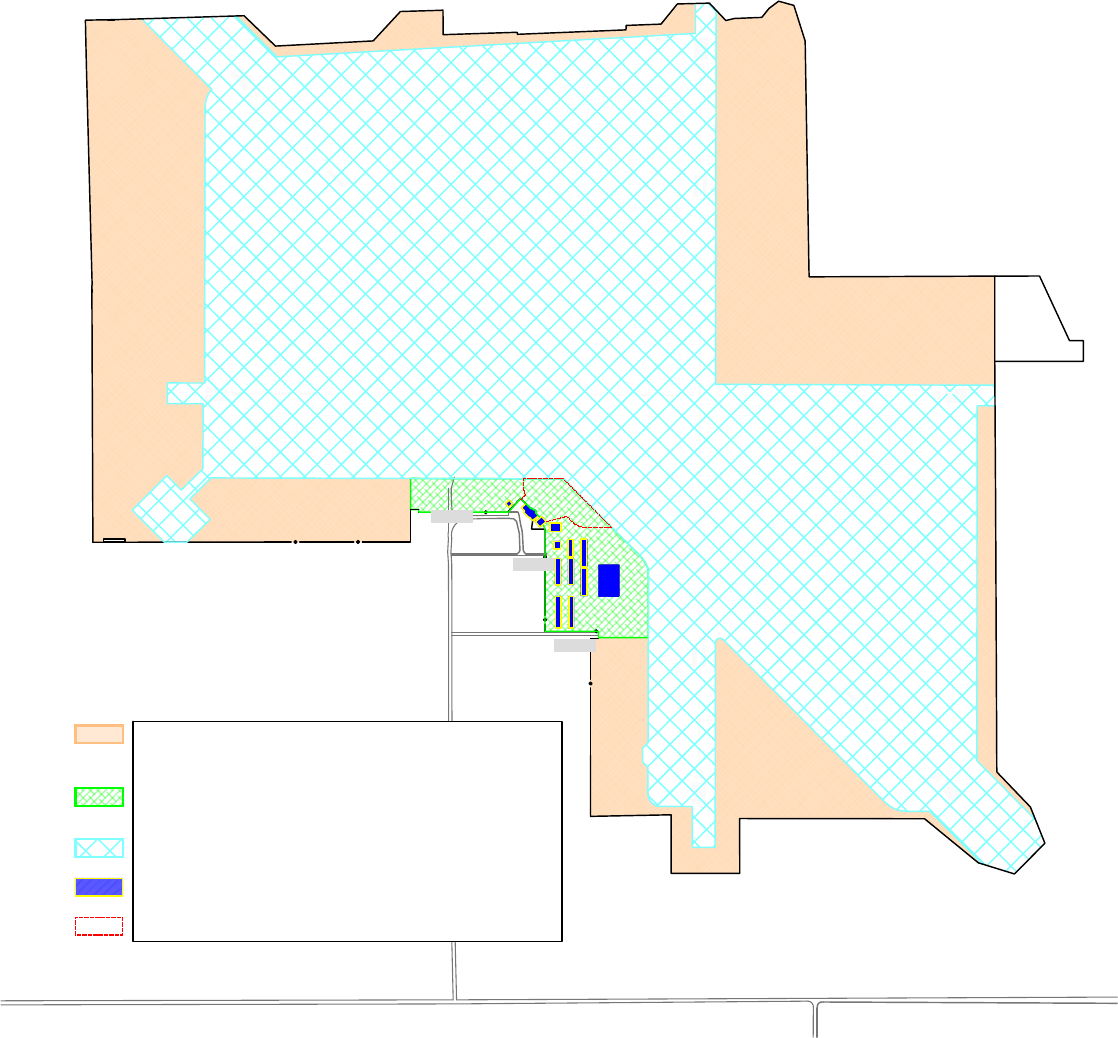
Airport Operations Area: Everything inside
the Airport fence
Non-Movement Area: Aprons, SIDA Area, hangar area,
taxilanes
Movement Area: Runways, taxiways, helipads
Structure
SIDA/Secure Area - No entry without authorization
Bishop Airport
Movement Area Map
Legend
RWY 8-26
RWY 12-30
RWY 17-35
TWY D
TWY C
TWY A
TWY J
TWY F
TWY H
A1
TWY E
TWY B
TWY H
A2
A3
TWY G
TWY A
Gate 1
Gate 2
Gate 3
